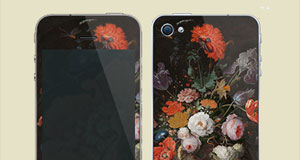...; ? anonymous [probably Margaretha Helena Graafland (1720-66)] sale, Amsterdam (J. Posthumus and H. de Winter), 10 June 1767, no. 13 (‘Een extra fraai Stuk, waarin Loth verbeeld is, zittende in een Rots, en rustende met zyn linkerhand onder ‘t hoofd, en met de Elleboog op een Boek ; voor hem staat een zilvere Schaal met eenige Kleinodiën, en in ‘t Verschiet ziet men de brandende Stad Sodom. Zeer krachtig en fraai van Coloriet, en uitvoerig op Paneel geschilderd. Hoog 23, breed 17 ½ duim [59.1 x 45 cm]’.), fl. 100, to Fouquet;{According to a note by J. van der Marck Ezn in a copy of the catalogue in the Bibliothèque Nationale, Paris, the paintings belonged to ‘Mevrouwe de Weduwe van den Heere Alewyn, geboore Geelvinck, vrouwe van Mynden en de Loosdrechten’. She has been identified as Margaretha Helena Graafland, Ambachtsvrouwe van Mijnden en de Beide Loosdrechten, the widow of Jacob Alewijn (1714-61); see Bruyn et al. I, 1982, p. 283. The couple first lived at Herengracht 615-17 and later at Herengracht 541; see Bijtelaar 1988, p. 92.} ...; ? collection Carl Philip César (1725-95), Unter den Linden 34, Berlin, 1768;{Inscription, etching, G.F. Schmidt, 1768; illustrated (in reverse) in Bruyn et al. I, 1982, p. 283, fig. 7.} ...; from Count Alexander Sergeievich Stroganoff (1733-1811), with two other paintings, 24,000 livres, to Count Alexander Alexandrovich Golovkin (1732-81), Paris, but kept in usufruct, 1 July 1778;{See Michel 2007, p. 198.} collection Count Alexander Sergeievich Stroganoff (1733-1811), Nevsky Prospekt 17, St Petersburg, 1793 (‘Le philosophe en méditation. Un vieillard vénérable, de la figure la plus noble, retiré au fond d’une grotte, assis sur un beau tapis, le coude appuyé sur un livre qui a pour titre ‘La Bible’, a l’air de réfléchir profondément sur les vanités de ce monde figurées par une quantité de vases d’or et d’argent, jetés négligemment devant lui. Hors de la grotte, on voit dans le lointain une ville en feu, des soldats qui montent à l’assaut, de malheureux habitants fuyant. [...] Il a été peint en 1630, date qui est au bas; Schmidt l’a gravé dans sa manière. Il est sur bois, d’un pied neuf pouces sept lignes de haut, sur un pied cinq pouces trois lignes de large [58.4 x 48.7 cm]’.);{Coll. cat. Stroganoff 1793, no. 38. The painting can also be seen in Andrei Voronikhin’s 1793 watercolour of the picture gallery of Count Alexander Stroganoff, St Petersburg, Hermitage; illustrated in Korshunova 2000, pp. 80-81.} his niece, Natalia Pavlovna (1796-1872), and her husband, Count Sergei Grigorievich Stroganoff (1794-1882), St Petersburg; his grandson, Count Sergei Alexandrovich Stroganoff (1852-1923), St Petersburg and, after 1905, Paris; from whom, frs. 300,000, to Herman Rasch, Stockholm, 1922; from whom, fl. 150,000, to the museum, with the support of private benefactors, the Vereniging Rembrandt, the State of the Netherlands, and the Fotocommissie, 1939
Bibliografie en afkortingenlijst voor de herkomst (pdf)


